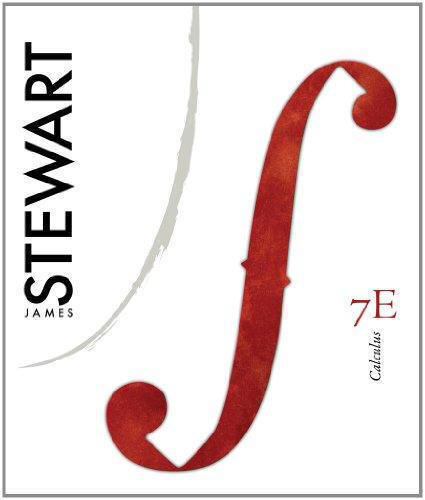 Fall
2011 Course Page
Fall
2011 Course PageMath 108: Calculus I (Physical Sciences & Engineering)
 Fall
2011 Course Page
Fall
2011 Course Page
Instructor: Dr. Richard Brown
| Lectures: | MWF 10:00am - 10:50am | Room: Ames 234 |
|
|
MWF 11:00am - 11:50am |
Room: Ames 234 |
Sections:
|
Section |
TA | Day | Time | Place |
| 1 | Chenyun Luo | Tuesday | 1:30pm - 2:20pm | Krieger 304 |
| 2 | Christopher Kauffman | Tuesday | 3:00pm - 3:50pm | Hodson 211 |
| 3 | Kalina Mincheva | Thursday | 4:30pm - 5:20pm | Krieger 302 |
| 4 | Kalina Mincheva | Thursday | 3:00pm - 3:50pm | Maryland 309 |
Text: Single Variable Calculus: Early Transcendentals, 7th Ed.
James Stewart, ISBN-10: 0-495-01169-X ISBN-13: 978-0-495-01169-9
Course Syllabus and Homework Assignment Schedule
So do you want to start thinking like a mathematician? Here is a good place to start:
Prerequisite material for this course: This is the first semester of our course series 110.108-9 Calculus I-II for the Physical Sciences and Engineering. The Official Department Syllabi for this series can be found here:
If you have some prior exposure to calculus, then it will benefit you to acquaint yourself with the material from this syllabus and how the text presents the content you are already familiar with. If not, then please pay attention to the types of pre-calculus functions and concepts we will be using in this course, and that I will assume you already know. Unfortunately, if there is pre-calculus material that you have not been exposed to, you will have to acquire this pre-requisite material on your own. Feel free to consult with me and/or your Section TA about this prerequisite material.
How to write up Homework Solutions: Constructing homework solutions is a vital way to explore and strengthen your understanding of the theoretical underpinnings and practical applications of the material in this course. There is no better way to fully comprehend the mathematical content of this course than to attempt to explain in full detail just how a mathematical problem is posed, presented and solved via the conceptual and practical application of technique and theory. Besides developing a great tool for continued study, both in this course and in future courses, constructing comprehensive and detailed solutions to mathematical problems develops your ability to communicate mathematical ideas effectively, rather than simply to calculate. The construction of your solutions, in effect the story you tell that convinces the reader that your solution is indeed correct, will be an important part of all grading criteria regarding homework assignments. Here is a brief idea of what I think makes for a well-constructed homework solution. And here are a set of selected homework solutions. Note the style of the presentation of solutions. You should strive to emulate a style like this.
Some relevant deadlines, calendars and schedules to keep in mind:
The Final Exam Schedule: The link currently goes to last spring's schedule. However, the structure will be the same. The final exam schedule for this course, along with all of the other 'service' courses, will be scheduled for the morning of the first day of the finals period: Wednesday, December 7, 2011 at 9am.
Extra Material you may find useful:
Section 2.1: Geogebra Module: The Tangent Line Problem
Section 2.4: Geogebra Module: The Limit Idea
Section 2.6: Geogebra Module: The Limit at Infinity: An Exponential Function
Section 2.6: Proof of the theorem on the continuity of a differentiable function.
Section 3.3: Geogebra Module: The Derivative of the Sine Function.
Section 3.3: Proof of the derivative of the sine function.
Section 3.6: An example of Implicit Differentiation as an analytical tool.
Section 4.1: Proof of the Extreme Value Theorem.
Section 4.4: Simple proof of a special case of L'Hospital's Rule.
Lecture Notes:
Exam 1 Solutions are here.
Exam 2 Solutions are here.
This page will be updated regularly when new information about the course arises. General information about course structure, requirements, as well as specific information related to your lecture or section, will be posted here and updated as needed.
For those of you who would like help outside of that of the professor or TAs, there is a free service offered by the Mathematics Help Room. Click for more details.
Last updated: 07/21/2011